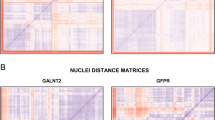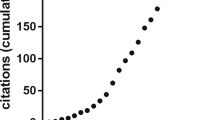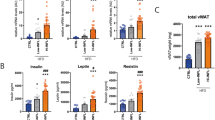Abstract
Background:
3T3-L1 cells have been widely used as a model for adipogenesis. However, despite its popularity, differentiation of this cell line has been reported to be inconsistent with low efficiency.
Objective:
To investigate the effect of media height during adipocyte differentiation on lipid accumulation and adipokine secretion in mature adipocytes.
Methods:
Three cell lines (3T3-L1, OP9 and ChubS7) were used to test the influence of media volume on adipogenesis. Total lipid content and lipid droplet size and number were quantified. Adipocyte related gene expressions were quantified during the course of differentiation. Secretion of leptin and adiponectin from mature adipocytes were measured using enzyme-linked immunosorbent assays. The influence of oxygen partial pressure on adipogenesis was investigated using three oxygen percentages: 5, 21 and 30%. Insulin sensitivity was measured by insulin inhibition of isoproterenol-induced lipolysis and phosphorylation of insulin receptor substrate-1.
Results:
A lower media height during adipogenesis increased total lipid accumulation, NEFA release and leptin and adiponectin secretion in mature adipocytes. Insulin sensitivity was not affected by media height during differentiation.
Conclusion:
Media height during adipogenesis was inversely correlated with lipid content in mature adipocytes. To achieve a high lipid content and greater adipokine secretion, it is best to use a low media volume during differentiation.
This is a preview of subscription content, access via your institution
Access options
Subscribe to this journal
Receive 12 print issues and online access
$259.00 per year
only $21.58 per issue
Buy this article
- Purchase on Springer Link
- Instant access to full article PDF
Prices may be subject to local taxes which are calculated during checkout




Similar content being viewed by others
References
Green H, Kehinde O . Sublines of mouse 3T3 cells that accumulate lipid. Cell 1974; 1: 113–116.
Nakano T, Kodama H, Honjo T . Generation of lymphohematopoietic cells from embryonic stem cells in culture. Science 1994; 265: 1098–1101.
Reed BC, Moss J, Fishman PH, Lane MD . Loss of choleragen receptors and ganglioside upon differentiation of 3T3-L1 preadipocytes. J Biol Chem 1980; 255: 1711–1715.
Mehra A, Macdonald I, Pillay TS . Variability in 3T3-L1 adipocyte differentiation depending on cell culture dish. Anal Biochem 2007; 362: 281–283.
Wolins NE, Quaynor BK, Skinner JR, Tzekov A, Park C, Choi K et al. OP9 mouse stromal cells rapidly differentiate into adipocytes: characterization of a useful new model of adipogenesis. J Lipid Res 2006; 47: 450–460.
Zebisch K, Voigt V, Wabitsch M, Brandsch M . Protocol for effective differentiation of 3T3-L1 cells to adipocytes. Anal Biochem 2012; 425: 88–90.
Pettersen EO, Larsen LH, Ramsing NB, Ebbesen P . Pericellular oxygen depletion during ordinary tissue culturing, measured with oxygen microsensors. Cell Proliferation 2005; 38: 257–267.
Yun Z, Maecker HL, Johnson RS, Giaccia AJ . Inhibition of PPARγ2 gene expression by the HIF-1-regulated gene DEC1/Stra13: a mechanism for regulation of adipogenesis by hypoxia. Dev Cell 2002; 2: 331–341.
Metzen E, Wolff M, Fandrey J, Jelkmann W . Pericellular PO2 and O2 consumption in monolayer cell cultures. Respir Physiol 1995; 100: 101–106.
Heimburg D, von, Hemmrich K, Zachariah S, Staiger H, Pallua N . Oxygen consumption in undifferentiated versus differentiated adipogenic mesenchymal precursor cells. Respir Physiol Neurobio 2005; 146: 107–116.
Reed BC, Lane MD . Insulin receptor synthesis and turnover in differentiating 3T3-L1 preadipocytes. Proc Natl Acad Sci USA 1980; 77: 285–289.
Mackall JC, Student AK, Polakis SE, Lane MD . Induction of lipogenesis during differentiation in a ‘preadipocyte’ cell line. J Biol Chem 1976; 251: 6462–6464.
Lee JH, Kemp DM . Human adipose-derived stem cells display myogenic potential and perturbed function in hypoxic conditions. Biochem Biophys Res Commun 2006; 341: 882–888.
Basciano L, Nemos C, Foliquet B, de Isla N, de Carvalho M, Tran N et al. Long term culture of mesenchymal stem cells in hypoxia promotes a genetic program maintaining their undifferentiated and multipotent status. BMC Cell Biol 2011; 12: 12.
Holzwarth C, Vaegler M, Gieseke F, Pfister SM, Handgretinger R, Kerst G et al. Low physiologic oxygen tensions reduce proliferation and differentiation of human multipotent mesenchymal stromal cells. BMC Cell Biol 2010; 11: 11.
Fink T, Abildtrup L, Fogd K, Abdallah BM, Kassem M, Ebbesen P et al. Induction of adipocyte-like phenotype in human mesenchymal stem cells by hypoxia. Stem Cells 2004; 22: 1346–1355.
Trayhurn P, Wang B, Wood IS . Hypoxia in adipose tissue: a basis for the dysregulation of tissue function in obesity? Br J Nutr 2008; 100: 227–235.
Ye J, Gao Z, Yin J, He Q . Hypoxia is a potential risk factor for chronic inflammation and adiponectin reduction in adipose tissue of Ob/Ob and dietary obese mice. Am J Physiol Endocrinol Metab 2007; 293: E1118–E1128.
Acknowledgements
We thank Dr Esteban Fernandez at the Imaging Core at CHLA for helping with microscopy and image analyses, and Dr Richard Sposto for assistance with statistical analysis. Funding: The present work was supported by the National Cancer Institute (CA139060) and funds from the Saban Research Institute and the Bogart Pediatric Cancer Research Program. XS was supported by a pre-doctoral award from The Saban Research Institute.
Author information
Authors and Affiliations
Corresponding author
Ethics declarations
Competing interests
The authors declare no conflict of interest.
Rights and permissions
About this article
Cite this article
Sheng, X., Tucci, J., Malvar, J. et al. Adipocyte differentiation is affected by media height above the cell layer. Int J Obes 38, 315–320 (2014). https://doi.org/10.1038/ijo.2013.96
Received:
Revised:
Accepted:
Published:
Issue Date:
DOI: https://doi.org/10.1038/ijo.2013.96
Keywords
This article is cited by
-
The role of Sirtuin 1 in regulation of fibrotic genes expression in pre-adipocytes
Journal of Diabetes & Metabolic Disorders (2024)
-
Limited oxygen in standard cell culture alters metabolism and function of differentiated cells
The EMBO Journal (2024)
-
Hypoxio: a simple solution to preventing pericellular hypoxia in cell monolayers growing at physiological oxygen levels
Cytotechnology (2019)
-
Establishment and characterization of feeder cell-dependent bovine fetal liver cell lines
In Vitro Cellular & Developmental Biology - Animal (2016)



